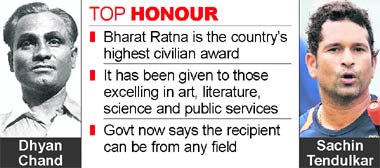The Durban Conference on Climate Change finally ended on the wee hours of Saturday after running for over 24 hours beyond schedule. By Friday, the two-week meeting being held at the International Convention Centre in Durban, had broken down into the ministerial-level huddles - small groups of top leaders meeting to thrash out a consensus. The halls outside were full of people waiting for some action. But strangely enough, there was no sense of anticipation or excitement. Strange in a world that is increasingly feeling the pains of climate change and that knows that time is running out.
Fight of good versus bad?
To the climate uninitiated, Durban has been portrayed as a fight between the ‘good’ - namely, the European Union (EU) - and the ‘bad’ - in this case, India in specific and China in general. The EU wants to move the world, and urgently; it has set a target for the completion of a new agreement by 2015 at the latest. It expects that this agreement will be legally binding and will include all countries to take commitments to reduce emissions in the future. This is necessary because the existing agreement, Kyoto Protocol, only sets emission reduction targets for the industrialised countries. Now with the world changing, China’s annual emissions have overtaken the US and India’s are growing as well, the new agreement must have all these countries on board. This is all good and necessary. The world indeed needs urgent action and the emerging world’s emissions have increased: therefore, new kinds of agreements are necessary.
So, all the countries that oppose this position are clearly in the dock. At this moment, the guns are being fired at the US, which has for long opposed a legal arrangement, and on China and India, who are seen to be on the side of the ‘bad’. At a press conference, EU’s climate change commissioner Connie Hedegaard on Friday morning said all countries (other than the three in opposition) were supportive of this new arrangement. The die had been cast. The endgame was awaited.
But this, as I said, is how the climate-naïve, the climate uninitiated would see it. The fact is that climate change negotiators know that the US will not agree to a legally binding arrangement. US special envoy on climate change Todd Stern had made it clear that “the United States could support a process to negotiate a new climate accord and for this it supports a legally binding agreement - therefore, the agreement to talk could be binding. But it does not, under any circumstances, support that the result should be legally binding.” This is not new.
The Kyoto Protocol had been dumped by the US on these grounds. So, there is little chance that the US will now bow to a deal which is legally binding. At a press briefing, when asked this question, Alden Meyer from the US NGO, Union of Concerned Scientists, said that they would hope that the US would accept these terms because of civil society pressure. But this is when the same civil society is struggling to get its country to take even the minimum emission reduction targets and make them happen.
The US had agreed in Cancun to cut its emissions by 17 per cent by 2020, but over its 2005 levels. Given that US emissions actually peaked by 2005, increased 1 billion tonne over 1990 levels, this is a meaningless deal. It means the US will reduce by only 3 per cent below its 1990 levels, when it needs to cut by 40 per cent in this period, based on past, present and future dangers. So, there is little chance that civil society pressure will work this time to get the redline shifted - move the country to a global legally binding agreement.
If the world knows that the US will not bite, why then this insistence on setting this ambitious timeline, and taking it so far that it could even jeopardise the entire climate agreement reached so far? The EU’s strategy is that once it breaks China and India into joining this agreement, it will force the US to accept the deal as well. This is because the US has made it clear that the only other thing it wants is to bring down the famous firewall - the differentiation between the developed and developing countries, which separates the countries responsible for climate change from the rest. It wants all to take action commonly and the EU will do the hatchet job. This is the grand design.
But the fact is this means that instead of putting pressure on the US, all that Durban is ending up doing is to push India and China against the wall. This when the deal, past or future, has to be based on the fundamental principle of equity and fairness in burden sharing. But this time, this is the one question that is particularly inconvenient at Durban.
Final outcome
The final agreement is mixed. The opposition of India and other countries, to a legally binding agreement, without adequate safeguards to respect the principle of differentiation has been accepted. Instead of a legally binding agreement in the future, the Durban platform has agreed that the future outcome could be a range of options, from a process to develop a protocol, another legal instrument or an agreed outcome with legal force”.
It agrees that this work should be completed by 2015, so that this new agreement or outcome can be implemented from 2020. Now, the challenge will be to ensure that this future agreement accounts for the historical and current emissions of countries in setting targets.
The meeting has also agreed to the second commitment period of the Kyoto Protocol — again a key demand of developing countries. The next challenge will be to set quantified emission reduction targets for all industrialised countries so that they can reduce emissions between 25-40 per cent over 1990 levels by 2020.
The third big delivery of the conference is to set up the Green Climate Fund to pay for mitigation and adaptation in the vulnerable countries of the world. But this fund is without any money as the industrialised countries say that recession means that they cannot pay. Now the big question is how innovative sources of financing can be raised.
But one thing is clear: this CoP will go down in climate history as one where global distrust has peaked. It also means that building trust will be difficult in this increasingly divided and discordant atmosphere and without this, action on an issue as contested, as climate change will be impossible. Furthermore, if the future agreement, which will be negotiated in the next two years, is not based on the underlying condition of equity in past and future carbon budgets, then this city of Durban will become famous for starting a new era of climate apartheid.
The author is Director, Centre for Science and Environment, New Delhi, and a Member of the Prime Minister’s Council on Climate Change



 Britain has a second Punjabi-origin MP following Seema Malhotra’s victory on behalf of the Labour Party in the Feltham and Heston bypoll. Malhotra told The Tribune that she is a product of multi-cultural Britain, was born in the UK to an Indian-origin father and a mother who is a retired teacher.
Britain has a second Punjabi-origin MP following Seema Malhotra’s victory on behalf of the Labour Party in the Feltham and Heston bypoll. Malhotra told The Tribune that she is a product of multi-cultural Britain, was born in the UK to an Indian-origin father and a mother who is a retired teacher. 
